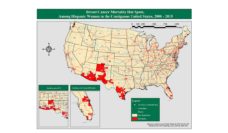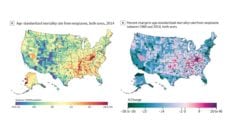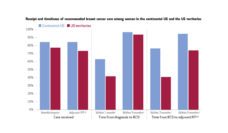The five-year survival rates for the most common cancers in the US improved by nearly 20 percent (first line of the graph above) since the 1970s. While promising overall, low survival rates persist for pancreatic, liver, lung, esophageal, brain, and many others. Five-year survival for uterine and cervical cancers even decreased, and researchers aren’t sure why.
Lung cancer remains the most common type of cancer across the globe with nearly 2.1 million diagnoses worldwide. In the US, approximately 234,000 Americans were diagnosed in 2018. Despite its extremely high prevalence, only 18.1 percent of individuals with a lung cancer diagnosis (up from 12.2 percent) are expected to reach their five-year survival mark.
Pancreatic cancer has the lowest five-year survival rate at 8.2 percent.
In contrast, prostate cancer had the greatest five-year survival increase from 67.8 percent to 98.6 percent, most likely reflecting a substantial uptick in prostate cancer screenings and early detection. Of the 165,000 Americans diagnosed with prostate cancer in 2018, 98.6 percent are expected to reach the five-year mark.
Five-year survival with leukemia also improved significantly from 34.2 percent to 60.6 percent, likely resulting from improved treatment methods.
In both detection and treatment, we’re making progress. For the millions of Americans who face a cancer diagnosis, this is cause for hope.
Databyte via Max Roser and Hannah Ritchie, Cancer. Our World in Data.














